Martin Bruce Bayer (30 June, 1935 – 23 October, 2023), was born in Empangeni, South Africa and was an agricultural entomologist, botanist, explorer, prolific writer, and the 4th curator of the Karoo Botanical Garden (1973-87) in Worcester, South Africa. He has published extensively on the Haworthia of southern Africa. [2]
Bruce Bayer is the ultimate Haworthia authority. He spent more time exploring the veld for Haworthia than anyone has or will likely ever again. He wrote many articles, starting with the early 1960’s, and several books: Haworthia Handbook (1976), The New Haworthia Handbook (1982), Haworthia Revisited. A revision of the Genus (1999) and beginning in 2002 no less than 11 volumes of Haworthia Updates. Undoubtedly Haworthia Revisited is a quintessential book, but still Bruce Bayer continued his field studies tirelessly, revealing the complexity of this genus, and problems of species delineation and the application of taxonomic code to a very fluid family. Even if some of his views seem too radical for the scientific world, even if some of his opinions are still surrounded by controversy, he is backed by over 60 years of experience, research, field studies and accumulated knowledge.



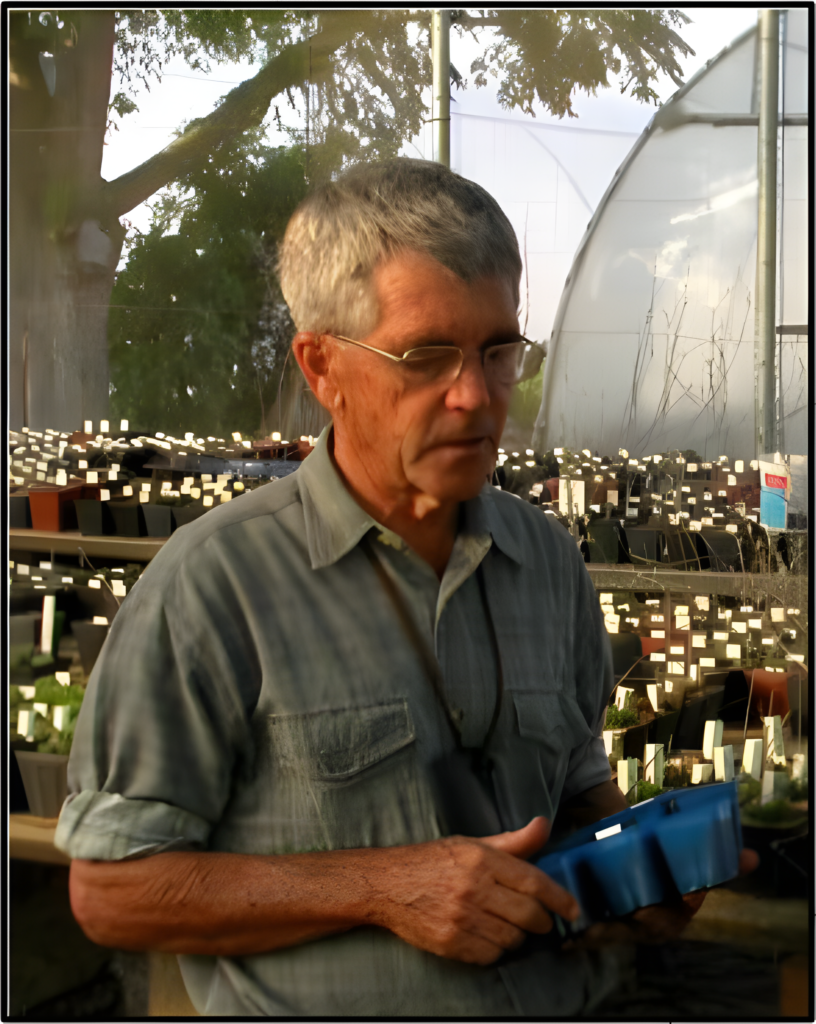
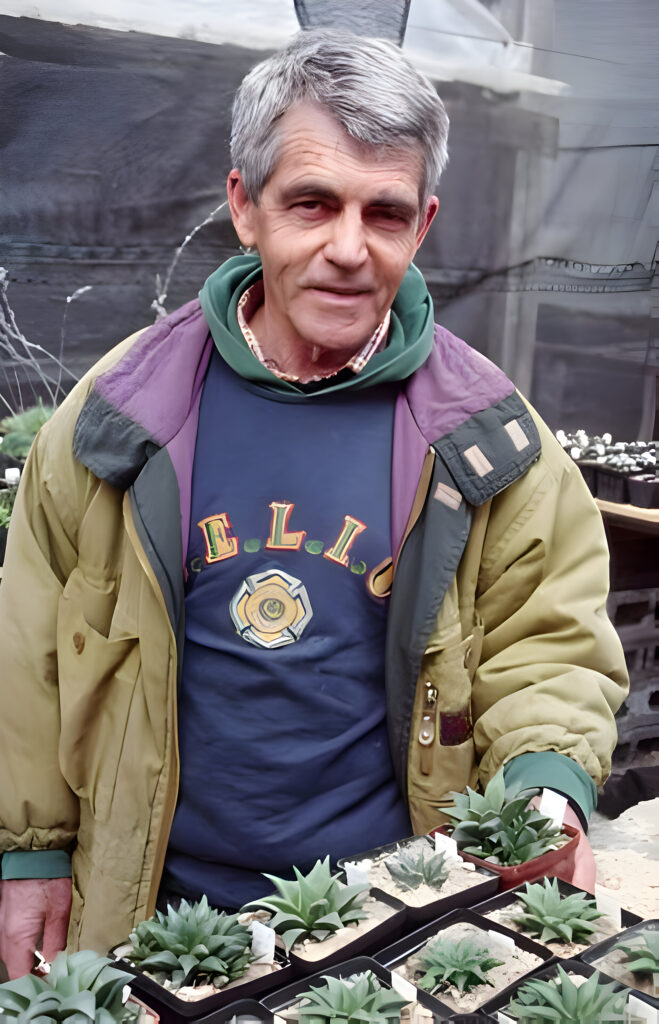
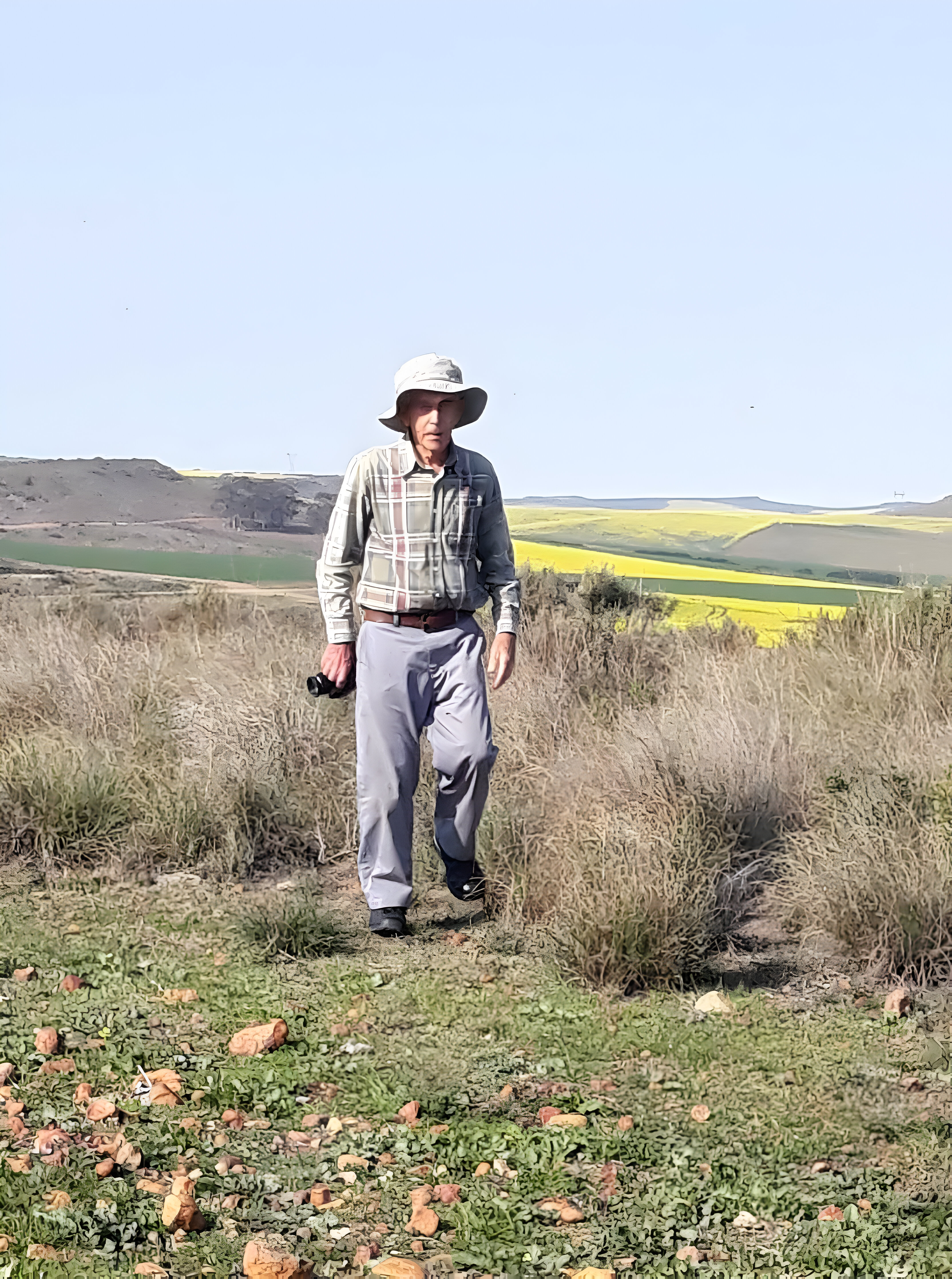
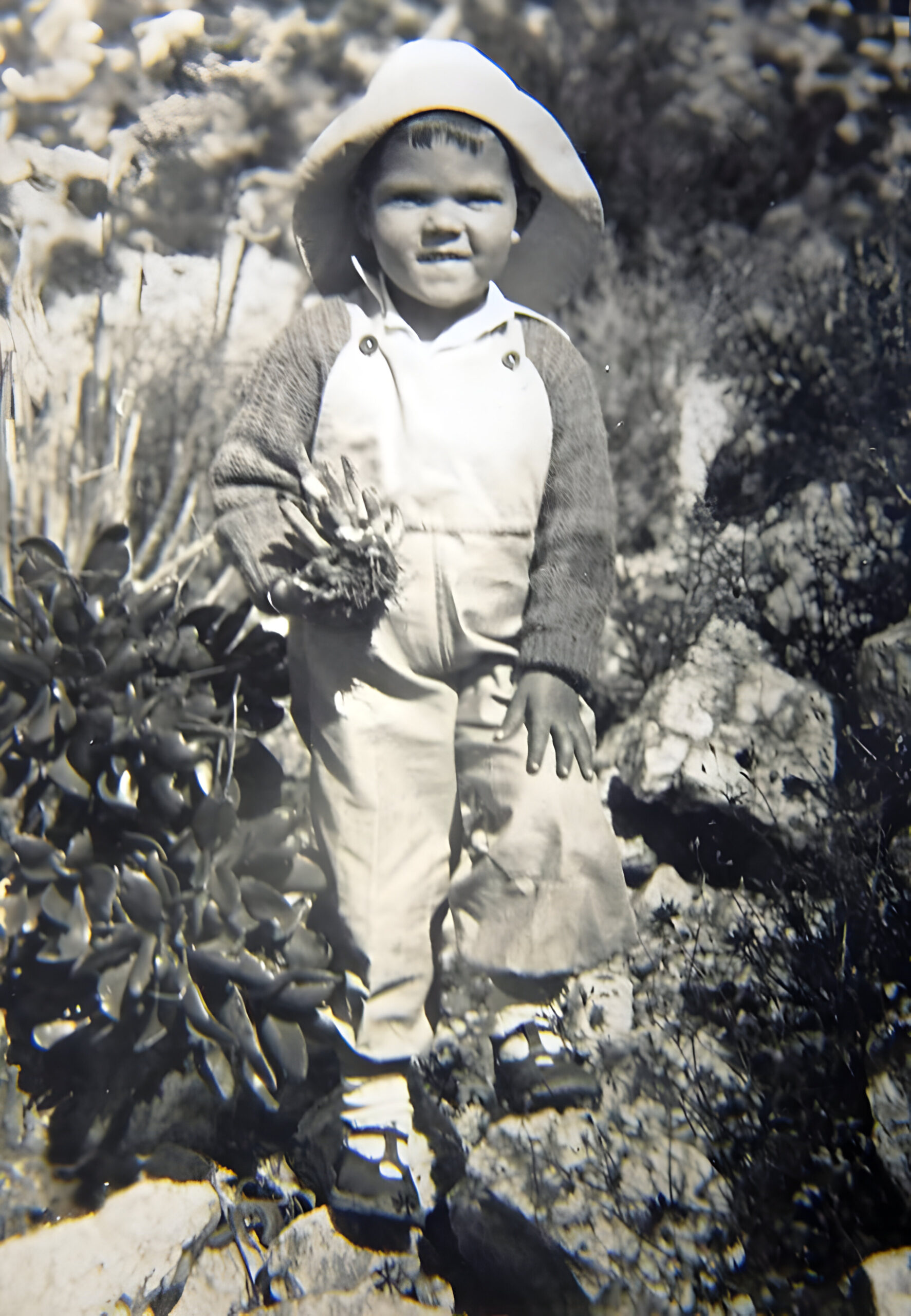 “This was near the start of my journey. Probably near Grunau in 1939 and the plant is probably the Stapelia dinteri sent to R.A. Dyer and noted in The Stapeliae of White and Sloane. A plant of H. tessellata from that era lived with us at least until 1957. I met up with H. coarctata and H. cymbiformis in 1942, wrote my first piece on Haworthia in 1961 after correspondence with Compton, Dyer and G G Smith.” ~ M. Bruce Bayer, July 23, 2013.
“This was near the start of my journey. Probably near Grunau in 1939 and the plant is probably the Stapelia dinteri sent to R.A. Dyer and noted in The Stapeliae of White and Sloane. A plant of H. tessellata from that era lived with us at least until 1957. I met up with H. coarctata and H. cymbiformis in 1942, wrote my first piece on Haworthia in 1961 after correspondence with Compton, Dyer and G G Smith.” ~ M. Bruce Bayer, July 23, 2013.
Karoo Botanical Garden Living Plant Collections
Bruce Bayer, previously a technical assistant at the garden, was appointed as Curator in 1973 and really put the Karoo Desert Garden on the international succulent map. The scientific collections were increased, and local and international succulent taxonomists made use of the living specimens in the plant houses. Bruce Bayer is internationally known for his work on Haworthia, having published several books and numerous scientific publications on the subject. The floral displays in the garden were also extended, making the garden famous for its masses of colour in spring.
Some of the plants named in honour of Bayer include:
- Albuca bruce-bayeri U.Müll.-Doblies (12)
- Anacampseros bayeriana SAHammer [9]
- Asparagus bayeri (Oberm.) Fellingham & NLMey. [5]
- Chamomilla recutita var. bayeri (Kanitz) Dostál (13)
- Eriospermum bayeri PLPerry [8]
- Euphorbia bayeri L.C.Leach (14)
- Fusifilum bruce-bayeri U.Müll.-Doblies, J.S.Tang & D.Müll.-Doblies (15)
- Gasteria brachyphylla var. bayeri Van Jaarsveld [10]
- Haworthia bayerii JDVenter & SAHammer [3]
- Huernia bayeri LCLeach [4]
- Namaquanula bruce-bayeri Doblies [11]
- Ornithogalum bruce-bayeri U.Müll.-Doblies & D.Müll.-Doblies (16)
- Tylecodon bayeri Van Jaarsveld [7]
References
- https://plants.jstor.org/stable/10.5555/al.ap.person.bm000000518
- https://haworthia-gasteria.blogspot.com/2008/02/bayer-species-list.html
- Cact. Suc. J. (Los Angeles) 69 (2): 75 1997
- Excelsa, Taxon. Ser. 4: 187 1988
- Bothalia 25 (2): 206 1995
- Veld & Flora, Volume 73, Issue 2, Jun 1987, p. 73 Some recollections … Pauline Perry
- https://plants.jstor.org/stable/10.5555/al.ap.visual.nbgart0001944
- http://plantsoftheworldonline.org/taxon/urn:lsid:ipni.org:names:904145-1
- https://plants.jstor.org/stable/10.5555/al.ap.specimen.nbg0132001-0
- G. brachyphylla var. bayeri van Jaarsveld (Aloe 29(1): 20, fig. 21 (p. 19), 1992).
- Graham Duncan,The Amaryllidaceae of Southern Africa, 2016, Umdaus Press. p.500.
- Taxon 63(6): 1328 (2014).
- Folia Mus. Rerum Nat. Bohemiae Occid., Bot. 21: 13 (1984): (1984).
- S. African J. Bot. 54(6): 539 (1988) (1988).
- Feddes Repert. 112(7-8): 479 (2001) (2001).
- Feddes Repert. 107(5-6): 505 (1996).
Books
(1976) Haworthia Handbook. A guide to the species, with identification keys and illustrations. Kirstenbosch (ZA): National Botanic Gardens of South Africa.
(1982) The New Haworthia Handbook. A revised guide to the literature of the genus, with discussion of the species, identification keys and colour illustrations. Kirstenbosch (ZA): National Botanic Gardens of South Africa.
(1999) Haworthia Revisited. A revision of the genus. Hatfield (ZA): Umdaus Press.
(2002) Haworthia Update: Essays on Haworthia. Volume 1. Hatfield, South Africa: Umdaus Press.
(2006) Haworthia Update. Essays on Haworthia. Volume 2. St. Michaels on Wyre (GB): Alsterworthia International / Harry Mays.
(2007) Haworthia Update. Essays on Haworthia. Volume 3. Part 1 / Part 2. St. Michaels on Wyre (GB): Alsterworthia International / Harry Mays.
(2008) Haworthia Update. Essays on Haworthia. Volume 4. St. Michaels on Wyre (GB): Alsterworthia International / Harry Mays.
(2009) Haworthia Update. Essays on Haworthia. Volume 5. (parts 1 & 2). St. Michaels on Wyre (GB): Alsterworthia International / Harry Mays.
(2010) Haworthia Update. Essays on Haworthia. Volume 6. St. Michaels on Wyre (GB): Alsterworthia International / Harry Mays.
(2012a) Haworthia Update. Essays on Haworthia. Volume 7 (parts 1 / 2 / 3 / 4). St. Michaels on Wyre (GB): Alsterworthia International / Harry Mays.
(2012b) Haworthia Update. Essays on Haworthia. Volume 8. St. Michaels on Wyre (GB): Alsterworthia International / Harry Mays.
Bayer, M. B. & Manning, J. C. (2012c) The Haworthia Nomenclator: A list of accepted species with some guidelines for infraspecific names. Redditch (GB): Haworthia Society.
(2013a) Haworthia Update. Essays on Haworthia. Volume 9. A Myth Corrected. St. Michaels on Wyre (GB): Alsterworthia International / Harry Mays.
(2013b) Haworthia Update. Essays on Haworthia. Volume 10. St. Michaels on Wyre (GB): Alsterworthia International / Harry Mays.
(2014) Haworthia Update. Essays on Haworthia. Volume 11. St. Michaels on Wyre (GB): Alsterworthia International / Harry Mays.
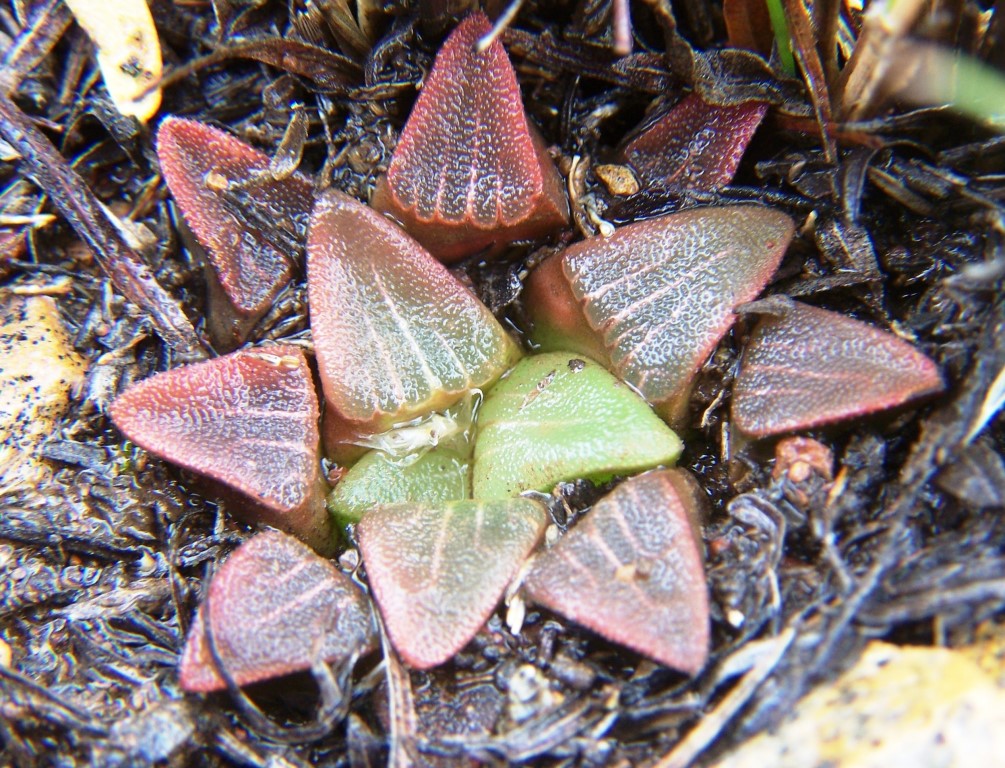
Haworthia bayeri.

Hi Bruce,
Don’t know if you remember me from years ago. Friend of Steve Hammer. I think we met only once at some conference, and maybe exchanged a note or two. This is regarding a question that has plagued me for decades, and I’ve never gotten a satisfactory answer too – regarding the genus name Apicra. I talked to Roy Mottram once about it, but he just sort of shot the name down as a synonym of Haworthia, without actually giving supporting detail. Based on the obvious original intent of Willdenow, I would agree, but it’s not that simple, since he didn’t designate a type species. This is my take on it.
Actually a simple question regarding a confused – old – mess. One for which it seems there may still be no real answer. I have researched it as best I can, and find many false statements/assumptions regarding the nomenclature of the name, but in effect the proper application of the name seems never to have “actually legally” been resolved, just lots of supposition based on opinions – – – lots of opinions, but never resolved.
This boils down to one simple question. Has anybody ever bothered to designate a type species for the genus? Do you know? I have been unable to access one important publication where this might have been done [D. Dietrich, Synopsis Plantarum 1840], otherwise I am moderately confident that it has not been (but see under Stearn below).
The simplest would be to designate the first species listed by Willdenow as the genotype [Aloe translucens]. This would automatically make Apicra a synonym of Haworthia [as most seem to assume – but it’s not “official” in any way I can see – yet].
What Stearn did in 1939 [proposal to conserve Apicra sensu Haworth] was pretty close to nonsensical. Haworth didn’t describe a new and separate genus as Stearn seemed to believe. Haworth cited Willdenow as the author of the genus. All Haworth did was take the Astroloba subset of Wlildenow’s Apicra and shrink the genus to something more restricted in scope. Had Stearn simply designated as type species one of the Astroloba sort species listed by Willdenow [i.e. spiralis, pentagona, bullulata, foliolosa], the deal would have been done – he sort of did, but I don’t think it’s legal. Had he, we would be using Apicra instead of Astroloba. As near as I can see, this still could be done, if somebody wanted to upset the apple-cart. [It could in fact still be done for any of the groups of “Haworthia” represented by species listed in Willdenow’s original description of Apicra. Unless – any of them have been conserved against Apicra?] In 1939 Stearn did write “suggested lectotype A. pentagona (Haworth) Haworth”. However, I’m not sure if this is truly a type species designation, because he was explicitly referring to “Apicra Haworth ……. non Apicra Willdenow …..”. The thing is – Haworth was citing “Apicra Wild.” in his publication.
Did that make sense?
Even with the current breakup of Haworthia, the name Apicra could still come back to haunt. Clearly Wildenow originally considered “Apicra” to include pretty much everything that has been included in Haworthia (including Astroloba), and any of those elements he included could be the “type”. He was clearly unaware that the genus had been named already.
Thanks,
Cheers,
Dave
Dear Dave,
Thank you so much for that delightfully interesting piece about Apicra. I cannot apologise for never having been a nomenclaturist and have just tried my very best to stay sane in doing what I did in Haworthia. As it is I think Stearn truly stuffed things up in respect of Haworthia herbacea (atrovirens) while Haworthia nigra is something that best be left for another madman to totally upturn names. I shudder to think what lurks there to amuse taxonomists for generations. The best solution will be to lump all the aloids into Aloe has was proposed some time ago!
Just think of all the time and energy Darryl Plowes and Larry Leach put into Stapeliad genera and the nomenclatural complexities, only to end up with them all being Ceropegia.
Steven Molteno will be able to help you as he is in collaboration with G.F. Smith who delights in these sorts of things.
I do wish I could contribute because I think the discussions around plant nomenclature comprise the largest volume of science writing that there is dealing with convolution of the intellect. I just marvel when I refer to a book like Goldblatt’s Gladiolus and note all the words about nomenclatural problems when this is popular literature. Perhaps one can read Taxon for entertainment? :)
Warm regards and good luck.
Bruce